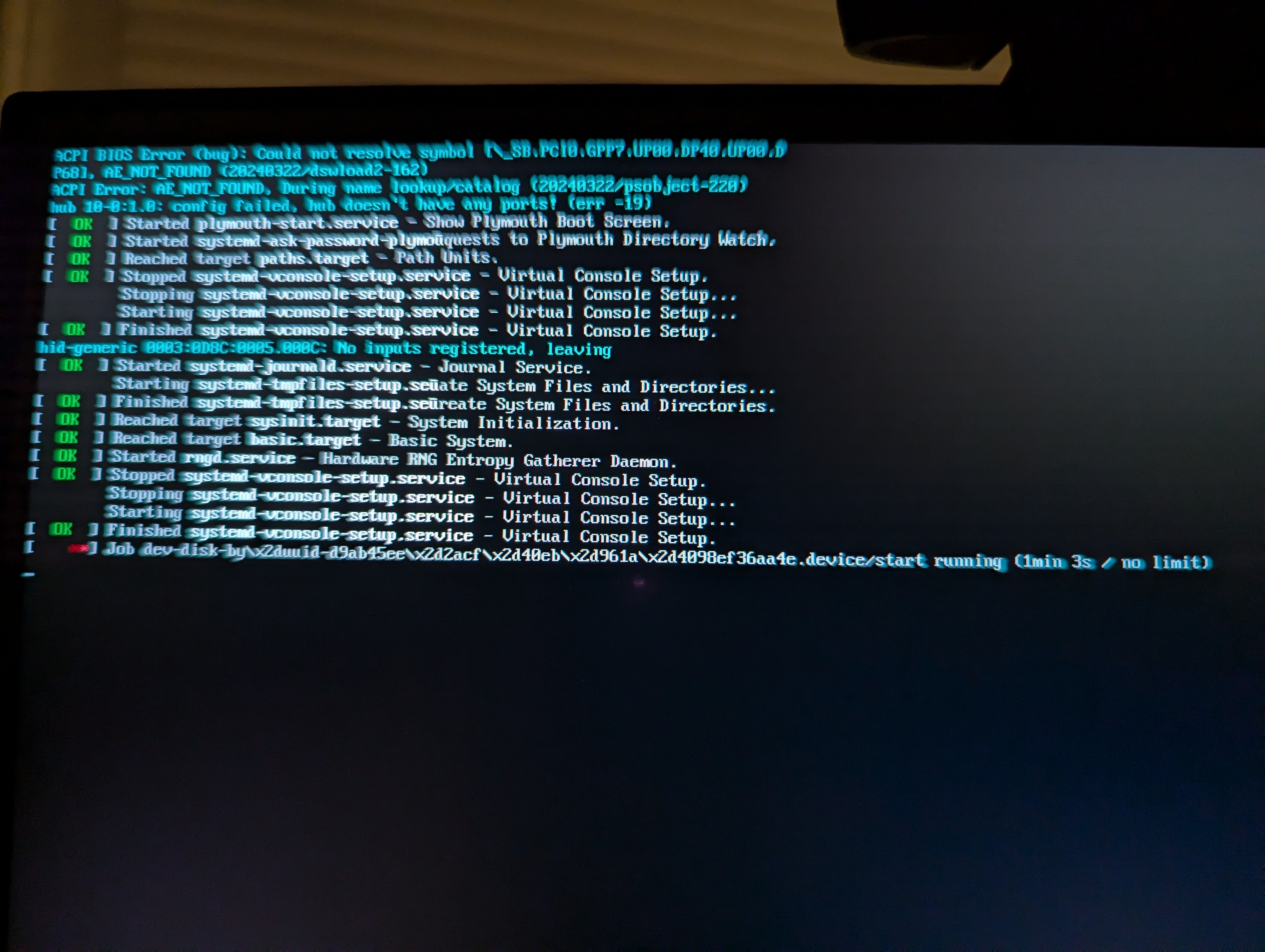Linux
Welcome to c/linux!
Welcome to our thriving Linux community! Whether you're a seasoned Linux enthusiast or just starting your journey, we're excited to have you here. Explore, learn, and collaborate with like-minded individuals who share a passion for open-source software and the endless possibilities it offers. Together, let's dive into the world of Linux and embrace the power of freedom, customization, and innovation. Enjoy your stay and feel free to join the vibrant discussions that await you!
Rules:
-
Stay on topic: Posts and discussions should be related to Linux, open source software, and related technologies.
-
Be respectful: Treat fellow community members with respect and courtesy.
-
Quality over quantity: Share informative and thought-provoking content.
-
No spam or self-promotion: Avoid excessive self-promotion or spamming.
-
No NSFW adult content
-
Follow general lemmy guidelines.
view the rest of the comments

probably the disk UUID has changed because of the path to the NVMe vs SSD. If you use partition UUID, they will be exactly the same, but the UUID of the physical disk is not cloned, as it is a identifier of the physical device and not it's content.
change it to partition UUID and it will boot.
So I fixed this by using clonezilla (which seemed to fix things up automatically), but for my edification, how do you get the UUID of the device itself? The only UUIDs I was seeing seemingly were the partition UUIDs.
sorry for the late reply, the command 'lsblk' can output it:
"sudo lsblk -o +uuid,name"
check "man lsblk" to see all possible combinations if needed.
there is also 'blkid' but I'm unsure whether that package is installed by default on all Linux releases, so that's why I chose 'lsblk'
if 'blkid' is installed, the syntax would be:
"sudo blkid /dev/sda1 -s UUID -o value"
glad you got it fixe, and hope this answers your question
(edit pga big thumbs and autocorrect... )
also, remember that the old drive now share the UUID with the NVMe drive (which is why I recommended using partition UUID and not disk UUID), so you will have to create a new GPT signature on the old drive to avoid boot issues if both drives are connected at the same time during boot, otherwise you might run into boot issues or booting from the wrong drive.